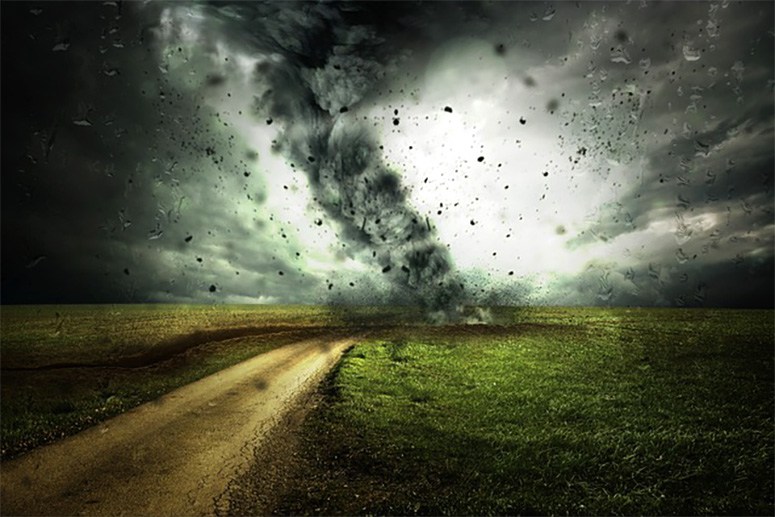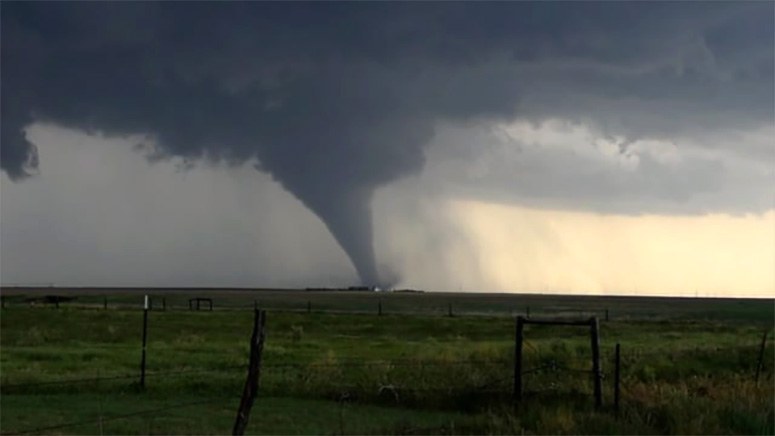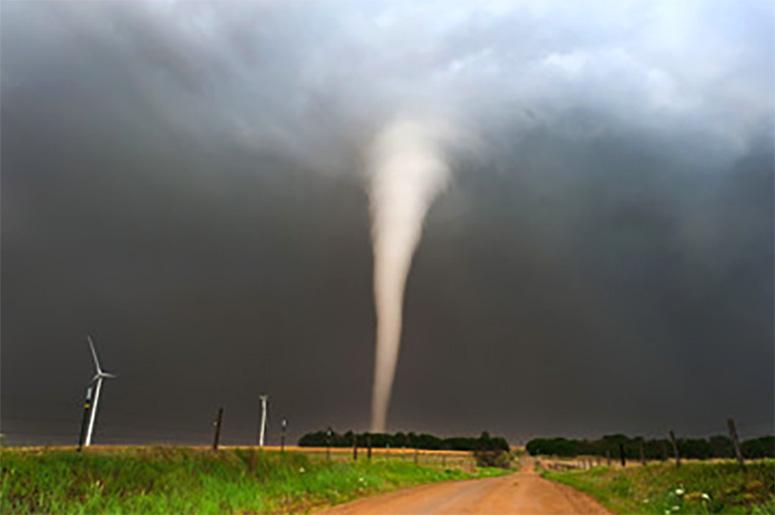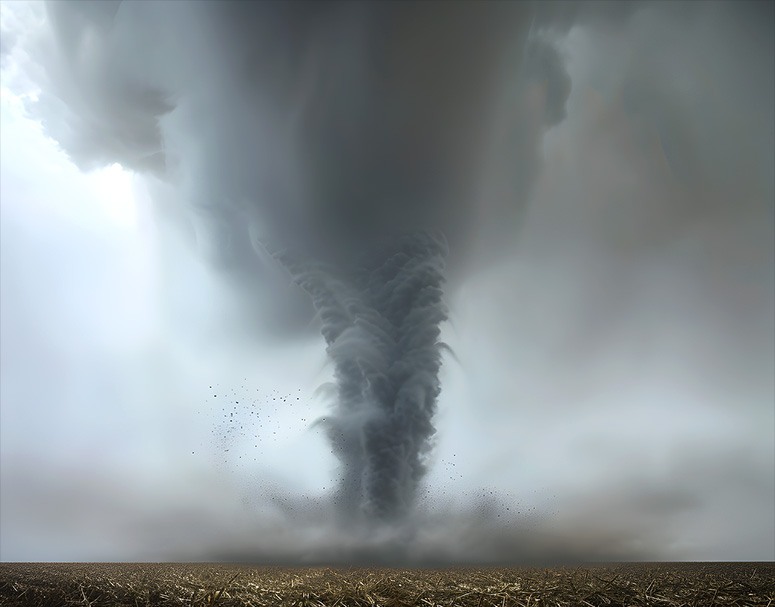Contents
Tornadoes are powerful and unpredictable natural phenomena that can cause significant destruction in mere minutes.
Understanding the odds of a tornado occurring, whether in a specific location or time period, is essential for preparedness. One common question is, What are the odds of a tornado hitting the same place twice?
This concern highlights the importance of assessing tornado risks based on historical data and current weather conditions.
This article explores the factors influencing tornado likelihood, such as climate, geography, and weather patterns, while also addressing how scientists predict these storms.
We cover vital safety precautions, ensuring you’re equipped to handle these extreme weather events.
What are tornadoes?
Tornadoes are rapidly rotating columns of air that extend from a thunderstorm to the ground, characterized by their funnel cloud shape, which can cause catastrophic damage to communities and infrastructure.
These natural disasters are a significant aspect of severe weather phenomena and are studied extensively within the fields of meteorology and climatology.
Understanding tornado formation and its associated atmospheric conditions is crucial for disaster preparedness, as these storms can lead to devastating consequences for affected areas.
What are the chances of a tornado occurring?
The chances of a tornado occurring can be determined by analyzing various factors such as geographical location, historical data, and seasonal trends, providing insights into the probability of these powerful storms.
Meteorologists utilize statistics and advanced forecasting models to assess risk factors and identify regions most susceptible to tornado outbreaks.
Understanding these probabilities not only informs emergency management and public safety efforts but also enhances community resilience against potential tornado threats.
1. What are the odds of a tornado occurring in a specific location?
The odds of a tornado occurring in a specific location depend significantly on the geographical characteristics of that area, along with historical data and statistical analyses that identify trends in tornado frequency.
Areas known as ‘Tornado Alley’ in the United States exhibit a higher probability due to their unique atmospheric conditions and storm patterns. By understanding these risk factors, residents can better prepare for potential tornado events.
For instance, the flat plains and warm, moist air from the Gulf of Mexico colliding with cooler air from the Rockies create an ideal environment for severe thunderstorms, which often spawn tornadoes.
Historical data indicates that states like Texas, Oklahoma, and Kansas experience not only a greater number of tornadoes but also more intense storms, as evidenced by statistics showing peaks in tornado occurrence during certain months.
By leveraging this information, individuals can assess their vulnerability and take proactive measures like investing in storm shelters or emergency preparedness kits, ultimately enhancing safety during tornado season.
2. What are the odds of a tornado hitting the same place twice?

The odds of a tornado hitting the same place twice can be surprisingly high, as historical data indicates that certain locations may experience tornado recurrence due to their specific environmental and atmospheric conditions.
By analyzing past events and utilizing statistical models, researchers can provide insights into the likelihood of repeat occurrences, which is essential for risk assessment and community planning.
Understanding what are the odds of a tornado hitting the same place twice helps local authorities establish effective disaster preparedness strategies.
This level of analysis not only sheds light on the frequency of tornadoes in identified hot spots but also allows for an in-depth evaluation of the potential damage these storms could inflict upon previously affected areas.
Such insights can dramatically influence zoning laws, infrastructure resilience, and emergency response protocols.
Community leaders can better allocate resources, fund preventive measures, and enhance public awareness campaigns about tornado safety, thereby minimizing the potential impacts of future events.
Adapting building codes and land use planning can contribute significantly to the overall safety of residents in regions identified as prone to tornado activity.
3. What are the odds of a tornado occurring in a certain time period?
The probability of a tornado occurring within a specific time period is influenced by seasonal trends, climatological data, and the prevailing storm patterns during that time frame.
By employing statistical methods that analyze past tornado occurrences, meteorologists can predict the likelihood of tornado formation in certain months or times of the year, which is critical for effective disaster preparedness and public awareness campaigns.
Understanding these time-based odds helps communities mitigate risks associated with severe weather.
Specific periods like spring and early summer have historically shown higher tornado activity, primarily due to the warmer temperatures meeting cooler air masses, which creates ideal conditions for tornado formation.
Plus analyzing historical data, meteorologists utilize real-time weather tracking to identify high-risk days. The integration of climatological studies enhances these predictions, allowing communities to recognize when to implement safety protocols.
Public awareness campaigns thus play a crucial role in educating residents about these seasonal variations, making preparedness not just an option but a necessity as they navigate the turbulent times associated with these dangerous natural phenomena.
What are the factors that affect the likelihood of a tornado?
Several factors contribute to the likelihood of tornado formation, including climate, geography, and specific weather patterns that create conducive atmospheric conditions.
Understanding these risk factors is fundamental to climatology and meteorology, as they help predict tornado occurrences and their potential intensity.
By analyzing these elements, researchers can enhance disaster preparedness and public safety measures in vulnerable regions.
1. Climate and geography
The interplay between climate and geography plays a crucial role in determining the risk factors associated with tornado occurrences, as certain regions are inherently more prone to these severe weather events due to their environmental conditions.
For instance, areas with flat terrain and specific climatic characteristics often experience heightened tornado frequency, making it essential for local authorities to understand these dynamics for effective emergency management and disaster preparedness.
In the United States, places such as Tornado Alley, which stretches through parts of Texas, Oklahoma, and Kansas, exemplify how a mix of warm, moist air from the Gulf of Mexico and cool, dry air from Canada can create the perfect conditions for tornado formation.
The elevation, soil moisture, and prevailing wind patterns further contribute to the unique climatological setup of these regions.
Comparatively, mountainous areas may be less susceptible due to their irregular topography, which disrupts wind flow and influences storm development.
Understanding these geographical nuances is vital in assessing risks and enhancing community resilience against such unpredictable natural disasters.
2. Time of year
The time of year significantly affects tornado occurrences, with certain seasons demonstrating pronounced peaks in the frequency of these storms.
During spring and early summer, the atmospheric conditions tend to be more conducive to tornado formation, which makes understanding seasonal trends essential for disaster preparedness and safety measures in vulnerable regions.
Recognizing these patterns enables local authorities to implement timely emergency response strategies.
As warm, moist air from the Gulf of Mexico collides with cooler, drier air from the north, the likelihood of severe thunderstorms, which can spawn tornadoes, escalates dramatically.
This seasonal dynamic showcases the importance of monitoring weather patterns closely, allowing communities to prepare adequately for potential threats.
Late summer and fall can sometimes exhibit unusual tornado activity, emphasizing the need for constant vigilance beyond just the peak months.
By tracking these variations and trends, both residents and officials can enhance their readiness, ultimately reducing risks associated with tornado occurrences and fostering a culture of safety.
3. Weather patterns
Understanding weather patterns is pivotal in predicting tornado occurrences, as specific atmospheric conditions can lead to the formation of these severe storms.
Meteorologists analyze storm data and atmospheric behavior to identify risk factors that contribute to tornado development, enabling more accurate forecasting and disaster preparedness.
This knowledge is essential for communities at risk, as it informs safety measures and emergency response planning.
Key weather patterns include the collision of contrasting air masses, such as warm, moist air meeting cool, dry air, which can create instability in the atmosphere.
Wind shear, or changes in wind direction and speed at different altitudes, plays a crucial role in the rotation of thunderstorms, potentially leading to tornadoes.
By examining historical storm data and current atmospheric conditions, meteorologists gain valuable insights into these dynamics, enhancing their ability to predict where and when tornadoes might occur.
Understanding these meteorological phenomena not only helps in forecasting but also give the power to communities to implement proactive safety strategies, ultimately reducing the risks associated with these destructive events.
How do scientists predict tornadoes?

Scientists utilize a combination of meteorological data, advanced prediction models, and Doppler radar technology to forecast tornadoes and provide timely warnings to communities at risk.
Understanding the dynamics of storm tracking allows meteorologists to identify conditions that may lead to tornado formation, facilitating tornado watches and warnings that enhance public safety.
This collaborative approach to forecasting is crucial for effective emergency response and disaster preparedness.
1. Meteorological data
Meteorological data plays an essential role in forecasting tornadoes, as it provides the statistical foundation for predicting the likelihood of tornado formation based on observed weather conditions.
By analyzing this data, meteorologists can develop prediction models that identify critical risk factors associated with potential tornado outbreaks. This information is vital for implementing effective disaster preparedness strategies in tornado-prone areas.
Various types of meteorological data contribute to these models, including temperature, humidity, wind patterns, and atmospheric pressure. Each of these factors can indicate instability within the atmosphere that favors tornado development.
For instance, high humidity levels can enhance the energy available for storm formation, while wind shear – changes in wind speed and direction with height—can create rotational movements conducive to tornado strength.
By systematically assessing these variables using statistical methods, meteorologists can construct more accurate prediction tools, enabling communities to take necessary precautions and improve overall safety in the face of severe weather events.
2. Doppler radar
Doppler radar technology is a critical tool in tornado forecasting, as it allows meteorologists to monitor storm tracking and analyze atmospheric conditions in real time.
This advanced technology provides valuable data on wind speed and direction, enabling meteorologists to detect rotation within thunderstorms that may indicate potential tornado formation.
The use of Doppler radar significantly enhances the accuracy of tornado warnings and emergency response efforts.
By measuring the changes in frequency of radio waves that bounce off moving precipitation, Doppler radar offers insights into the storm’s structure and intensity, giving experts critical time to issue alerts.
The ability to visualize storm rotation and assess wind shear plays a pivotal role in public safety, as it allows for earlier interventions during severe weather events.
This technology aids in collecting historical data on tornadoes, which is invaluable for researchers and emergency planners striving to improve community preparedness and resilience against future storms.
Doppler radar stands as an essential component in the toolkit for safeguarding lives and property in tornado-prone regions.
3. Tornado watches and warnings
Tornado watches and warnings are essential components of emergency response strategies, providing critical information to the public about potential tornado risks.
A tornado watch indicates favorable conditions for tornado development, while a warning signifies that a tornado has been spotted or indicated by radar, requiring immediate action for public safety.
Understanding these alerts is crucial for effective disaster preparedness and community resilience.
The distinctions between these two alerts play a vital role in how communities prepare for severe weather events.
When a watch is issued, residents should remain vigilant, readying their emergency kits and confirming their safety plans, as conditions can change rapidly.
Conversely, upon a warning, it often becomes imperative to seek shelter immediately, highlighting the differences in urgency associated with each alert.
These notifications not only inform individuals but also give the power to communities to coordinate response efforts, ensuring that vital resources and support systems are in place to protect lives and minimize property damage.
Therefore, timely recognition of watches and warnings fosters a culture of proactive safety measures among residents, ultimately enhancing overall community preparedness and resilience.
What are the safety precautions for tornadoes?

Implementing effective safety precautions is paramount for minimizing risks associated with tornadoes, and it begins with comprehensive disaster preparedness planning.
Communities should develop emergency plans that outline evacuation routes and identify safe shelter locations to protect residents during tornado events.
By staying informed about weather conditions and warnings, individuals can make timely decisions to enhance their safety during severe weather occurrences.
1. Creating an emergency plan
Creating an effective emergency plan is crucial for tornado preparedness, enabling individuals and families to respond promptly and safely during severe weather events.
This plan should include evacuation routes, designated safe shelters, and communication strategies to ensure that everyone is informed and can act quickly.
Collaborating with local authorities can further enhance the response time and overall effectiveness of the emergency plan.
Plus these essential components, residents should also consider setting up a reliable system for alert notifications that includes weather radios or mobile apps, allowing them to receive real-time updates about any impending tornado threats.
Community drills can provide practical experience in executing the emergency plan, reinforcing the importance of each person’s role during a crisis.
Establishing these strong ties with local emergency management teams will ensure a coordinated approach, facilitating resource sharing and assistance when minutes matter most.
Ultimately, a well-structured emergency plan not only prepares individuals but also fosters a community that is informed, resilient, and ready to face the challenges posed by tornadoes.
2. Having a safe shelter
Having access to a safe shelter is essential during tornado events, as it serves as the primary means of protecting individuals from the destructive forces of a tornado.
The significance of these shelters extends beyond mere protection – they are a key component of disaster preparedness that can significantly reduce injuries and fatalities in high-risk areas.
To ensure maximum safety, it’s vital that these structures meet or exceed established construction standards and building codes, which are designed to mitigate risks associated with intense winds and debris impacts.
Communities are encouraged to collaborate with local authorities to identify suitable locations and resources for building tornado shelters, thus enhancing overall community resilience.
By prioritizing public safety and investing in these protective measures, communities can foster a sense of security that give the power to residents to respond effectively during such catastrophic events.
3. Staying informed
Staying informed about tornado risks and weather conditions is vital for enhancing personal safety and community preparedness during severe weather events.
By actively engaging with trustworthy weather resources, individuals can gain insights into the latest forecasting developments, ensuring they are well-prepared for unexpected situations.
When communities prioritize awareness initiatives, they foster a culture of readiness, which give the power to residents to respond adeptly when faced with potential tornado threats.
Accessing tools such as weather apps, alerts from local meteorological services, and participating in community preparedness programs can transform a passive approach into an active defense strategy.
As a result, through collaboration and education, neighborhoods can significantly increase their resilience and minimize the impact of tornado disasters.
If you’re interested in the chances of a tornado hitting the same area twice, you can find the details in our FAQ further down.
Uncover the captivating world of odds and exceptional events. Satisfy your curiosity by visiting our other articles at WhatAreTheOddsOf.NET.



